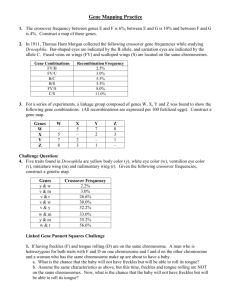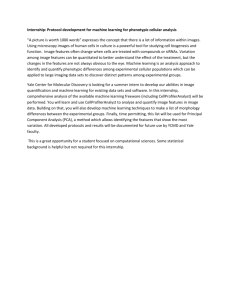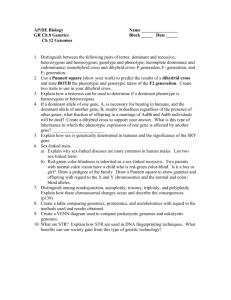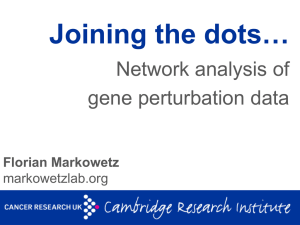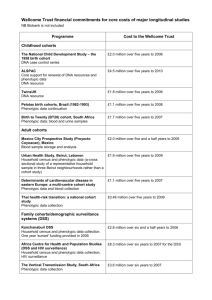Summary of Article on DS
advertisement
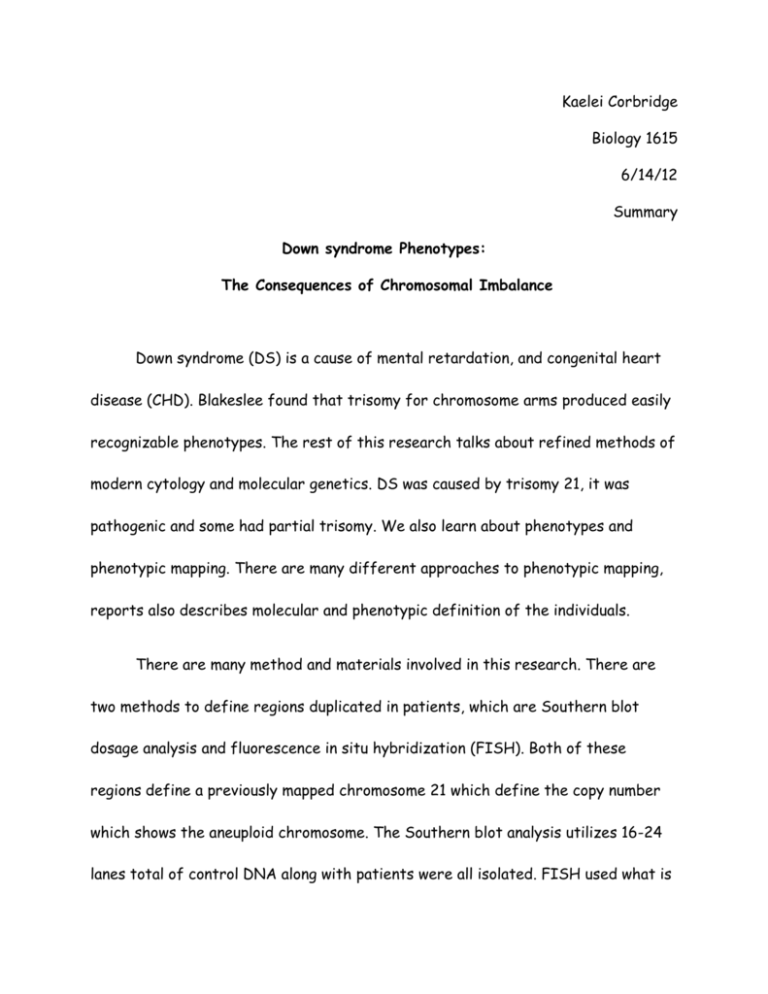
Kaelei Corbridge Biology 1615 6/14/12 Summary Down syndrome Phenotypes: The Consequences of Chromosomal Imbalance Down syndrome (DS) is a cause of mental retardation, and congenital heart disease (CHD). Blakeslee found that trisomy for chromosome arms produced easily recognizable phenotypes. The rest of this research talks about refined methods of modern cytology and molecular genetics. DS was caused by trisomy 21, it was pathogenic and some had partial trisomy. We also learn about phenotypes and phenotypic mapping. There are many different approaches to phenotypic mapping, reports also describes molecular and phenotypic definition of the individuals. There are many method and materials involved in this research. There are two methods to define regions duplicated in patients, which are Southern blot dosage analysis and fluorescence in situ hybridization (FISH). Both of these regions define a previously mapped chromosome 21 which define the copy number which shows the aneuploid chromosome. The Southern blot analysis utilizes 16-24 lanes total of control DNA along with patients were all isolated. FISH used what is called plasmids and/or cosmids. Another extended procedure used was prepared from peripheral blood lymphocyte cultures by using methotrxate synchronization; this was called the extended metaphase chromosome. The whole idea to gain results was to establishing a phenotypic map, 16 individuals used, data taken from publish literature or from original records. The effects of using FISH and Southern Blot were great techniques to help determine the chromosome 21 molecular content. They had a table made of the clinical features of 16 patients with partial trisomies of chromosome 21. It is a large table with a lot of information but is very beneficial to the idea of the results. This article allows so much to discuss the first thing discussed was that this article gives a basic idea of the phenotypic features of DS. It shows percentages and results of some studies and facts. It talks about sources for the phenotypic variability seen in full trisomy 21. This also talks about the individuals with partial trisomy and the chromatin structure and what it does. The article made it a point to have an ultimate goal of constructing phenotypic mapping which further explains that it is to define molecularly the chromosomal regions and that the genes are responsible for particular phenotypes. The gene in a single region may be largely responsible for a given phenotype, simple overlap procedure maybe used to create a phenotypic map. This article talks about the frequency of CHD in partially risomic individuals and suggests that the single locus could be responsible for most variability of traits. Multiple-loci-affecting traits give examples and evidence like how certain things express the phenotypic variability like atrioventricular septal defects vs. atrial septal defects. If a single gene/cluster is responsible for most of phenotype, thin lines will show its location. If two or more genes/clusters are responsible for phenotype, thin lines show the extent beyond the minimal region where two genes could be located. If three or more gene/clusters responsible for phenotype, dashed lines will show the regions where the third will be located. A significant conclusion of the map is genes outside one region also contribute to the DS phenotype. Along with the single gene it suggests and alteration in nomenclature. Further indication of role of a gene talks about Alzheimer’s disease, Megakaryotic leukemia, DS leukemia risks can occur due to different alterations on each gene. The phenotypic map reflects the nature of DS as a contiguous gene syndrome. In conclusion, this article has many wonderful facts and there was much research that was involved. As of right now, gene copy is under investigation, researchers are looking into some regions that have been cloned in large fragment vectors. This article gives basic understanding of DS and has high hopes for treatment for DS in the future.


